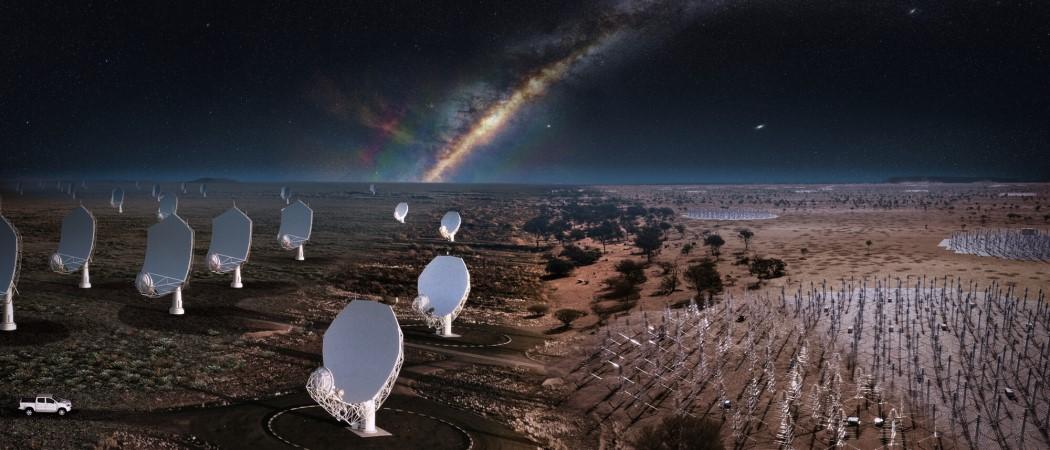After decades of planning, building the €2B Square Kilometre Array is poised to begin in South Africa and Australia

Photo: Square Kilometre Array (SKA)
The construction of the world’s largest telescope, the Square Kilometre Array (SKA) is set to begin in South Africa and Australia, with the first contracts due to be advertised on 1 July.
“This moment has been 30 years in the making,” said Philip Diamond, director general of the SKA Observatory, the group of countries behind the effort. “Humankind is taking another giant leap by committing to build what will be the largest science facility of its kind on the planet.”
Although functioning under a single umbrella, SKA is not one telescope but two, SKA-Low in Australia and SKA-Mid in South Africa, names which describe the radio frequency range they each will cover.
The idea of building the telescope dates back three decades, and scientists have been exploring potential technologies for the past 20 years. The decision to split the site was made nine years ago. Construction was due to start at the beginning of 2021, but COVID-19 has caused some delay.
Once constructed, the telescopes will enable scientists to study objects that give off radio waves far away in space, producing enormous amounts of data on the universe, around 700 petabytes each year. The data will be provided to researchers in regional centres to enable a range of science “covering almost the entire history of the universe,” said Diamond.
This will have the potential to revolutionise understanding of the formation and evolution of galaxies, fundamental physics in extreme environments and the origins of life.
A year after SKA Observatory countries settled on South Africa and Australia as the sites for the telescope, the group began working on the design, with more than 100 research labs, universities and companies around the world designing antennas, networks, software and infrastructure for the telescopes.
As the final step before the start of the construction, earlier this year, the SKA Observatory became an official intergovernmental organisation uniting member countries and observers. Apart from South Africa and Australia, the founding members of SKA are China, Italy, the Netherlands, Portugal and the UK.
The project has an intergovernmental status similar to that of another giant research structure, CERN, home of the world’s largest and most powerful particle accelerator.
SKA has an agreement with CERN to collaborate in handling and analysing the huge amounts of data the telescope will generate.
Building the telescopes is the next step. Procurement is starting immediately, with 70 contracts ready to launch for bidding in the SKAO member states. Construction is foreseen to last until 2028 or 2029, although the first scientists may have the opportunity to start research in the next few years.
“We won’t see shovels in the ground on 1 July. What we will see is invitations to tender for much of the construction work issued from that day,” said Diamond.
Alongside the science, construction of the SKA telescopes will produce social and economic benefits for countries involved in the project, through direct and indirect economic returns from innovation and technological spin-offs, jobs and increased industrial capacity. An impact assessment outlining the benefits from SKA-related activities over the last few years was a key part of the case for the project.





 A unique international forum for public research organisations and companies to connect their external engagement with strategic interests around their R&D system.
A unique international forum for public research organisations and companies to connect their external engagement with strategic interests around their R&D system.